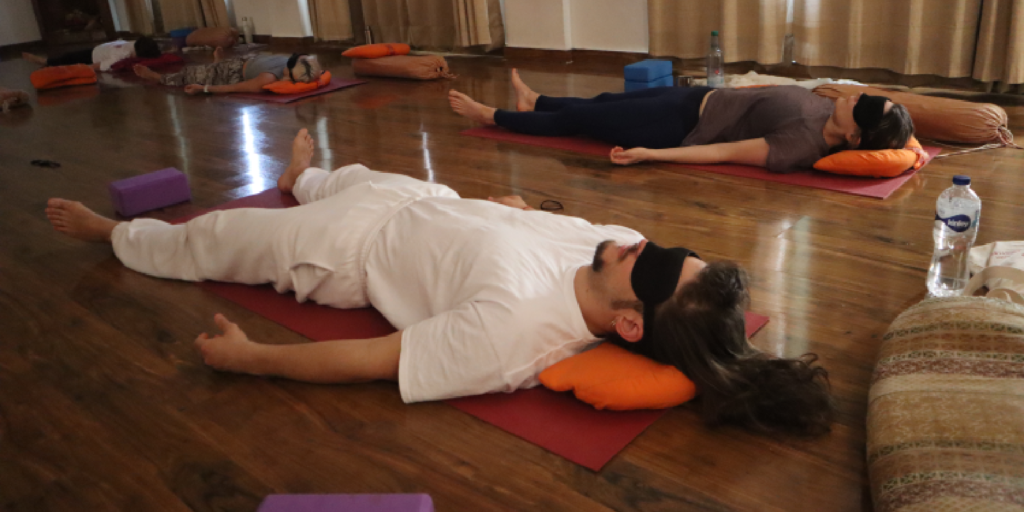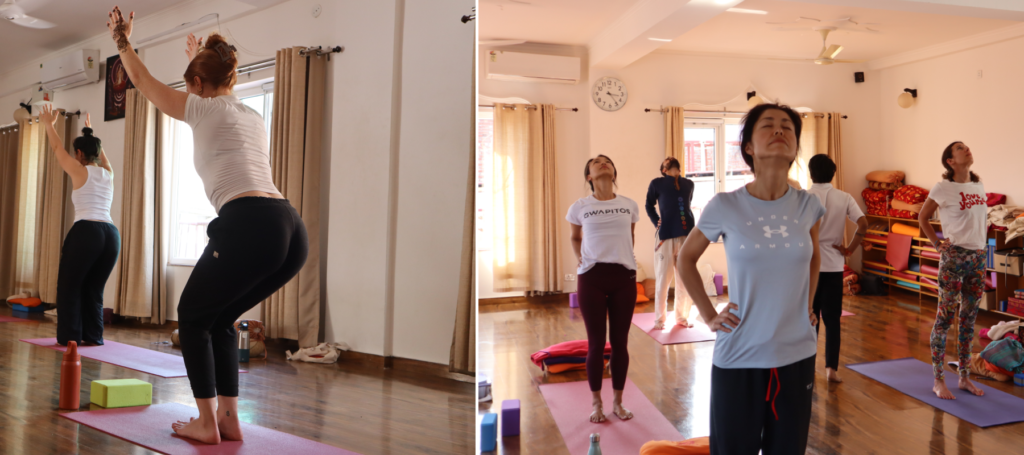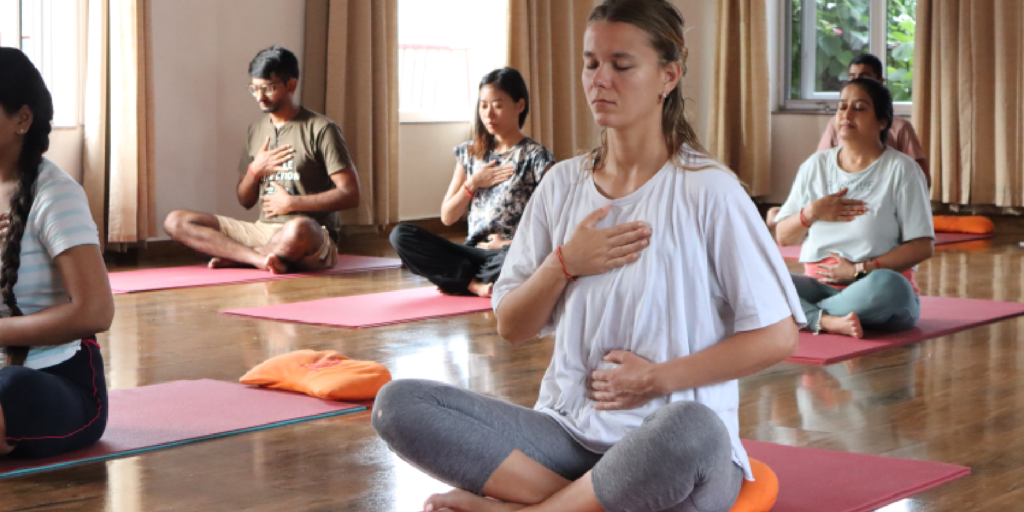In our fast-paced, achievement-driven world, finding ways to nurture and replenish ourselves is crucial for maintaining overall well-being. Restorative yoga offers a sanctuary for the mind and body—a place where healing, relaxation, and renewal take center stage. Unlike dynamic forms of yoga, yoga focuses on stillness, deep breathing, and supported postures, providing a unique opportunity to shift from “doing” to “being.”
Understanding Restorative Yoga
Restorative yoga is a gentle practice that emphasizes relaxation and recovery rather than exertion or flexibility. By fully supporting the body with props like bolsters, blankets, and blocks, restorative yoga allows you to hold poses longer without physical strain. This extended time in supported postures encourages profound rest, enabling the body to access its natural healing capabilities.
The core principle is simple yet transformative: When you are supported, you don’t expend energy—you receive energy. Instead of depleting yourself, you place your body in a state of receptivity, where it can rebuild and restore.
Key Benefits of Restorative Yoga
1. Profound Relaxation and Stress Relief
One of the most celebrated benefits of restorative yoga is its ability to calm the mind and body. By activating the parasympathetic nervous system, also known as the “rest and digest” system, restorative yoga helps counteract the effects of chronic stress.
- Reduces cortisol levels: Prolonged stress leads to elevated cortisol, a hormone associated with inflammation and anxiety. yoga helps bring cortisol levels back to balance.
- Promotes mental clarity: Extended periods of stillness provide a mental “reset,” reducing the chatter in the mind and improving focus.
2. Replenishes Energy Reserves
Restorative yoga allows your body to enter a state of deep rest, which is essential for replenishing energy stores:
- Cellular rejuvenation: During rest, your body focuses on repair and recovery at the cellular level.
- Combats fatigue: By reducing physical and mental exertion, restorative yoga helps prevent exhaustion and promotes sustainable energy levels.

3. Enhances Circulation and Detoxification
Supported poses in restorative yoga gently encourage the circulation of blood, lymph, and energy throughout the body:
- Improves oxygenation: Blood flow to vital organs is enhanced, delivering oxygen and nutrients more efficiently.
- Aids detoxification: Better lymphatic circulation helps remove toxins from the body.
4. Supports the Nervous System
The extended time spent in restorative postures allows the effects of deep relaxation to penetrate the nervous system:
- Calms overactive nerves: It is especially beneficial for people experiencing anxiety, insomnia, or chronic pain.
- Resets the stress response: Regular practice can improve your ability to stay calm and composed in stressful situations.
5. Improves Sleep Quality
Restorative yoga creates an ideal environment for improving sleep patterns:
- Relieves insomnia: The calming effects prepare the mind and body for restful sleep.
- Resets circadian rhythms: Regular practice can help restore your body’s natural sleep-wake cycle.
6. Increases Flexibility Without Strain
Unlike more vigorous yoga styles, restorative yoga gently encourages flexibility:
- Passive stretching: Supported poses allow muscles to lengthen naturally without active effort.
- Safe for all levels: It’s ideal for individuals with limited mobility or recovering from injury.
7. Encourages Emotional Healing
Yoga is not just a physical practice; it also offers profound emotional benefits:
- Releases stored tension: Deep relaxation can help release unresolved emotions held in the body.
- Fosters mindfulness: The stillness promotes self-awareness and acceptance.
8. Balances the Endocrine System
The gentle, sustained postures of restorative yoga can support hormonal balance:
- Regulates stress hormones: Helps normalize levels of cortisol and adrenaline.
- Promotes overall well-being: Certain poses stimulate the thyroid and adrenal glands, supporting metabolic and emotional health.
Why Choose Restorative Yoga?
Restorative yoga is an accessible practice suitable for everyone, regardless of age, fitness level, or experience. It offers a counterbalance to the busyness of modern life, where constant activity often leads to burnout. Whether you are dealing with stress, recovering from illness, or simply seeking a moment of calm, yoga can help you. At a Yoga School in Rishikesh, you can explore the profound benefits of restorative yoga, learning techniques to nurture both body and mind in a supportive and serene environment.
- Build resilience and adaptability.
- Cultivate a sense of inner peace and stability.
- Prevent physical and mental exhaustion.

What Happens During a Restorative Yoga Session?
In a restorative yoga class, the focus is on fewer poses held for extended periods, typically 5–20 minutes. Each pose is supported by props to ensure complete relaxation.
Common Features of a Restorative Yoga Class:
- Minimal Movement: Fewer transitions between poses help maintain a calm and meditative atmosphere.
- Use of Props: Bolsters, blankets, straps, and blocks are used to ensure comfort and stability.
- Guided Breathing: Instructors may guide you through deep breathing exercises to deepen relaxation.
- Quiet Environment: The room is typically dimly lit, with soothing music or complete silence.
Sample Restorative Yoga Poses
1. Child’s Pose (Balasana)
- How to Practice: Kneel on the mat, bringing your big toes together and sitting back on your heels. Place a bolster or folded blanket under your torso for support.
- Benefits: Releases tension in the lower back and hips while calming the mind.
2. Legs-Up-the-Wall Pose (Viparita Karani)
- How to Practice: Lie on your back with your legs resting vertically against a wall. Place a bolster under your hips for support.
- Benefits: Improves circulation, reduces swelling, and calms the nervous system.
3. Supported Reclining Bound Angle Pose (Supta Baddha Konasana)
- How to Practice: Lie back on a bolster with the soles of your feet together and knees splayed open. Use blankets under your knees for comfort.
- Benefits: Opens the chest and hips, promotes relaxation, and aids digestion.
4. Corpse Pose (Savasana)
- How to Practice: Lie flat on your back, with a bolster under your knees and a blanket over your body for warmth.
- Benefits: Encourages total relaxation and integration of the practice.
How to Begin a Restorative Yoga Practice
Starting restorative yoga is simple and requires minimal equipment. Here’s how you can begin:
- Create a Quiet Space: Choose a calm, clutter-free area.
- Gather Props: Use yoga props or household items like cushions and blankets.
- Set a Timer: Start with 10–20 minutes for a session.
- Focus on Breathing: Incorporate slow, mindful breathing to enhance relaxation.
- Practice Consistently: Aim for at least one session per week to experience its full benefits.
Who Can Benefit from Restorative Yoga?
Restorative yoga is particularly beneficial for:
- Busy professionals looking to de-stress.
- Caregivers needing time to replenish their energy.
- Individuals recovering from illness, injury, or surgery.
- Athletes seeking a complement to intense training.
- Beginners exploring yoga in a gentle, accessible way.

Final Thoughts
Restorative yoga is much more than a physical practice—it’s an invitation to slow down, breathe deeply, and reconnect with yourself. Its gentle yet transformative effects extend beyond the mat, fostering resilience, clarity, and a profound sense of well-being. In a 300 hour Yoga Teacher Training in Rishikesh, practitioners delve deeper into the principles and techniques of restorative yoga, gaining the knowledge and skills to integrate its healing benefits into their own lives and teaching practices.
Whether you’re new to yoga or an experienced practitioner, restorative yoga offers a unique opportunity to cultivate self-care, mindfulness, and inner peace.
So, roll out your mat, gather your props, and let restorative yoga guide you toward a state of deep relaxation and renewal.




